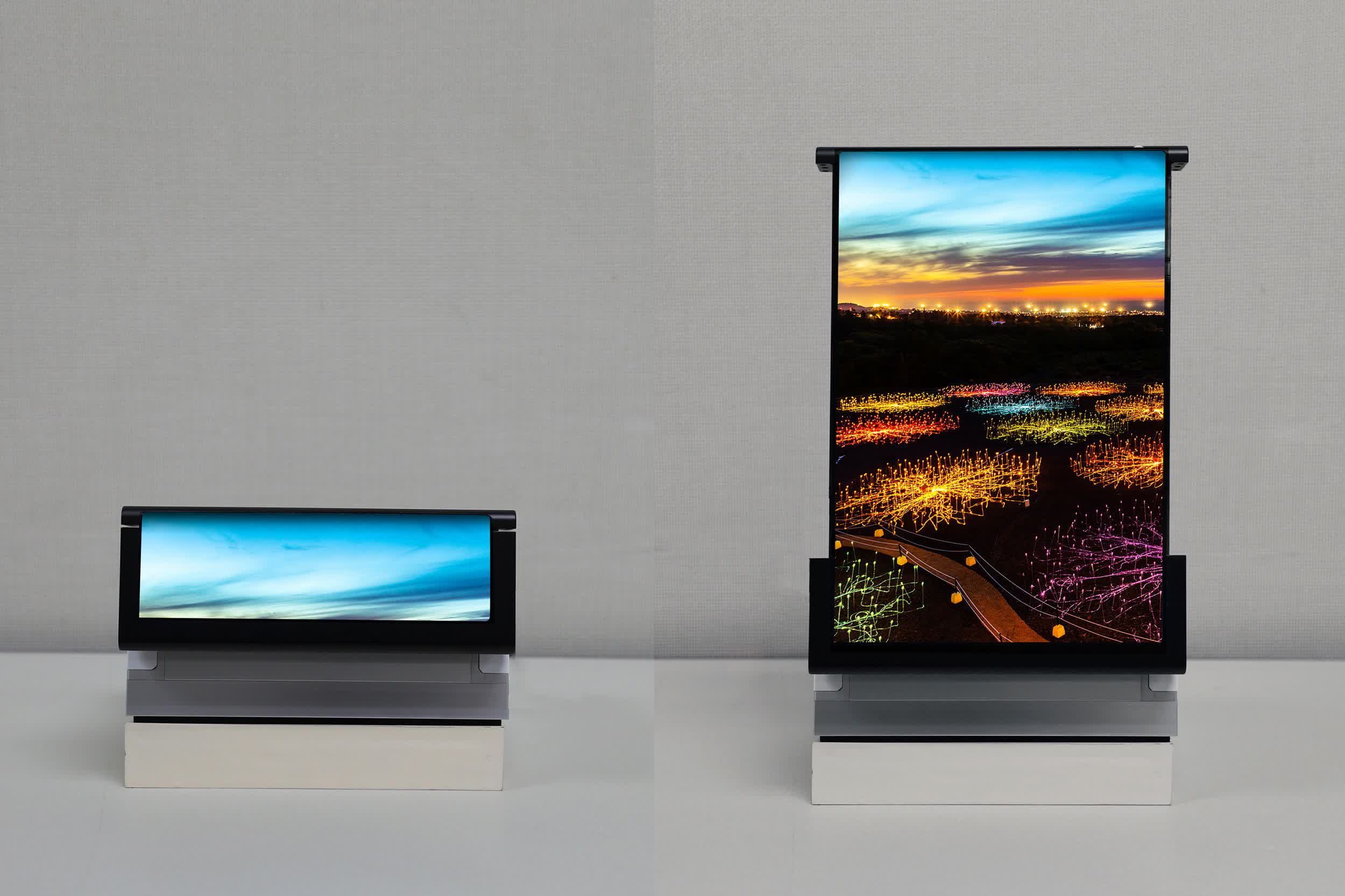Through the looking glass: Samsung unveiled new projects and upcoming foldable screens at SID Display Week 2023. The company is trying to make portable screens more mobile, increase the flexibility of foldable-screen devices, and explore the health-sensing potential of OLED technology. A new tool will also help customers navigate Samsung's OLED selection.
Samsung Display showcased a range of unique prototypes in Los Angeles this week. The exhibit included a screen that can roll like paper, an OLED that can sense a person's health, and more.
The Samsung Rollable Flex can stretch by a factor of five, from about two inches to around 10 inches. The demo unit rolls the tablet-sized screen like a scroll into a form factor similar to a phone, which could likely fit in a user's pocket. It's unclear what the Rollable Flex's maximum size might be, but the technology could make larger displays like monitors and TVs easier to transport and install.
The company also demonstrated its other flexible screen technologies it unveiled at CES, like the Flex In & Out, Flex Hybrid, and Slidable Flex Solo. Unlike conventional foldable phones that only fold inward, the Flex In & Out uses 360-degree rotation to fold inward and outward. The tech will possibly feature in the Galaxy Z Fold 5 and could lead to thinner and lighter phones.

Samsung's Flex Hybrid combines folding and sliding functionality to let one device fill multiple roles with various form factors. In January, the company demonstrated one that switched from 10.5 inches in a 4:3 aspect ratio to 12.4 inches in 16:10.
The other major exhibit was Samsung's Sensor OLED Display, which uses the unique properties of the light from OLED screens for multiple health-related and biometric functions. The technology incorporates a light-sensing organic photodiode embedded in the panel, which detects reflected OLED light.
The new tech can offer a new way to measure health-related functions. For example, the contraction and relaxation of blood vessels in the finger affect how OLED light reflects. So by touching the screen with two fingers, the device can measure heart rate, blood pressure, and stress levels.
A 77-inch Samsung QD-OLED TV and a 49-inch QD-OLED ultra-wide monitor also appeared at the event. Additionally, the company promoted its OLED Finder service, a website with accessible information about Samsung's range of OLED panels.
